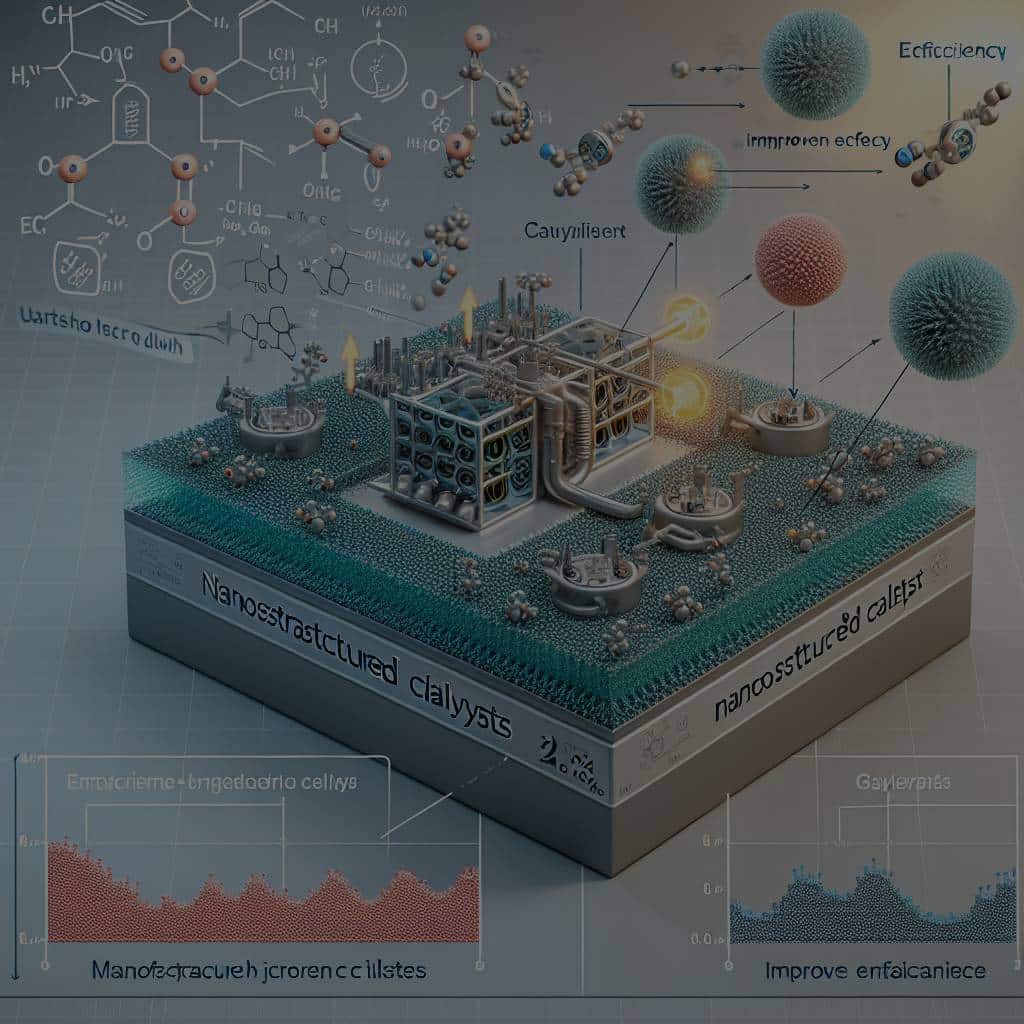Can Nanostructured Catalysts Improve Efficiency in Hydrogen Fuel Cells?

As we delve deeper into the epoch of sustainable energy, hydrogen fuel cells continue to be a focal point for researchers and engineers alike. These cells, which generate electricity through electrochemical reactions, present a promising avenue for clean energy. However, their efficiency and performance are fundamentally influenced by the catalysts used. The latest advancements in nanostructured catalysts may hold the key to improving these parameters, paving the way for broader hydrogen fuel cell adoption.
The Role of Catalysts in Hydrogen Fuel Cells
Before discussing how nanostructured catalysts can enhance the efficiency of hydrogen fuel cells, it’s crucial to understand the role of catalysts in fuel cells. Catalysts are substances that can speed up chemical reactions without being consumed in the process. In hydrogen fuel cells, they play a pivotal role in facilitating the electrochemical reactions that generate electricity.
Cela peut vous intéresser : How Can Phased Array Ultrasound Technology Improve Early Breast Cancer Detection?
Hydrogen fuel cells work by splitting hydrogen atoms into protons and electrons. The catalysts help this reaction to occur more quickly and efficiently. The separated electrons are then forced to travel through an external circuit to reach the other side of the cell, creating an electric current in the process. Without catalysts, this reaction would be too slow to be practical for energy production.
Traditionally, the catalysts used in hydrogen fuel cells have been made from precious metals like platinum. However, these materials are costly and scarce, which can limit the widespread implementation of fuel cell technologies.
A lire en complément : Is Dynamic Spectrum Access the Key to Solving Wireless Network Congestion?
Exploring Nanostructured Catalysts
Nanostructured catalysts are a recent development in the field of hydrogen fuel cell technology. These catalysts, engineered at the nanoscale, are designed to maximize surface area and reactivity, leading to more efficient and powerful reactions in fuel cells.
At the nanoscale, material properties can drastically change, enabling new capabilities that can’t be achieved with bulk materials. For instance, nanostructured catalysts made from non-precious metals or even metal-free materials can outperform traditional platinum-based catalysts under certain conditions, offering a potentially more sustainable and cost-effective alternative for hydrogen fuel cell technology.
Moreover, because nanostructured catalysts can be finely tuned at the atomic level, they can be designed to optimize specific properties that enhance fuel cell performance, such as durability, conductivity, and resistance to poisoning.
Enhancing Efficiency with Nanostructured Catalysts
The potential of nanostructured catalysts to improve fuel cell efficiency lies in their unique properties at the nanoscale. Because these catalysts have a high surface-to-volume ratio, they can expose more catalytic sites to the reactants, leading to a faster and more efficient reaction.
Furthermore, the ability to design nanostructured catalysts with specific properties can enable them to overcome some of the limitations of traditional catalysts. For example, some nanostructured catalysts can resist poisoning – a common issue with platinum-based catalysts where impurities bind to the catalyst surface and impede its performance.
In addition, nanostructured catalysts can be designed to operate effectively at lower temperatures than conventional catalysts. This is significant as it reduces the energy required to initiate the reaction, boosting the overall efficiency of the fuel cell.
Nanostructured Catalysts: A Path to Sustainable Hydrogen Fuel Cells
The development and use of nanostructured catalysts could be a game-changer for the future of hydrogen fuel cells. By improving performance and efficiency while potentially reducing costs, these catalysts could help to overcome some of the most significant barriers to the widespread adoption of hydrogen fuel cells as a sustainable energy solution.
In particular, the possibility of using non-precious metal or metal-free nanostructured catalysts offers a significant advantage. By moving away from the reliance on expensive and scarce materials like platinum, hydrogen fuel cells could become a more accessible and affordable technology.
However, the development of nanostructured catalysts is not without challenges. Ensuring their long-term stability and durability, as well as scaling up their production to meet potential demand, will be crucial areas of focus for ongoing research.
Despite these challenges, the potential of nanostructured catalysts to revolutionize hydrogen fuel cells is undeniable. As the quest for sustainable energy solutions intensifies, these advanced materials could play a key role in shaping a cleaner, more energy-efficient future.
Application and Challenges of Nanostructured Catalysts in Fuel Cells
Implementing nanostructured catalysts into fuel cells is not a straightforward task. It involves various complex processes and presents several challenges. Researchers have been utilizing Google Scholar and Chem Soc as valuable resources to learn from existing studies and to share their findings.
One of the primary applications of nanostructured catalysts in fuel cells is the oxygen reduction reaction (ORR). This reaction is essential for transforming chemical energy into electrical energy in a fuel cell. Nanostructured materials, due to their large surface area, have shown promising potential for improving the catalytic activity and efficiency of this reaction.
Different types of nanostructured catalysts, such as core-shell, have demonstrated enhanced ORR activity. Core-shell nanostructured catalysts typically consist of a core material enveloped by a shell material, which can be optimized for different properties such as conductivity or resistance to poisoning. Studies have shown that these catalysts can perform the methanol oxidation reaction (another crucial reaction in certain types of fuel cells) more effectively at room temperature compared to traditional catalysts.
However, developing and utilizing these catalysts are not without challenges. One of the main issues lies in the production process. Many nanostructured catalysts are produced through solution-based methods, which can be challenging to scale up and control with high precision.
Moreover, the long-term stability of nanostructured catalysts is still an active area of research. While they may display high catalytic activity initially, it’s essential to ensure that they maintain this level of performance over time. Researchers are exploring ways to enhance the durability of these catalysts, especially under high-temperature conditions where many fuel cells operate.
Conclusion: The Future of Nanostructured Catalysts in Hydrogen Fuel Cells
The exploration and development of nanostructured catalysts represent a significant step forward in the quest for more efficient and sustainable hydrogen fuel cells. Through their unique properties, these catalysts offer a promising alternative to traditional platinum-based catalysts.
The potential benefits of nanostructured catalysts are far-reaching. They could improve the efficiency of the oxygen reduction reaction, resist poisoning, work effectively at lower temperatures, and potentially reduce the costs associated with fuel cell technology. As such, they could play a pivotal role in expanding the application of hydrogen fuel cells in various sectors, from transportation to power generation.
That said, realizing the full potential of nanostructured catalysts requires ongoing research and development. Addressing challenges related to their long-term stability, production scalability, and performance consistency is critical.
As we continue our search for sustainable energy solutions, the study of nanostructured catalysts for hydrogen fuel cells remains a hot topic for researchers. The information available on Google Scholar and Chem Soc is testament to the scientific community’s interest and continued investment in this area.
While there is still much to learn and many challenges to overcome, one thing is certain: nanostructured catalysts have the potential to play a significant role in shaping our energy future. They may well be instrumental in making hydrogen fuel cells a viable, cost-effective, and sustainable solution for our growing energy needs.
